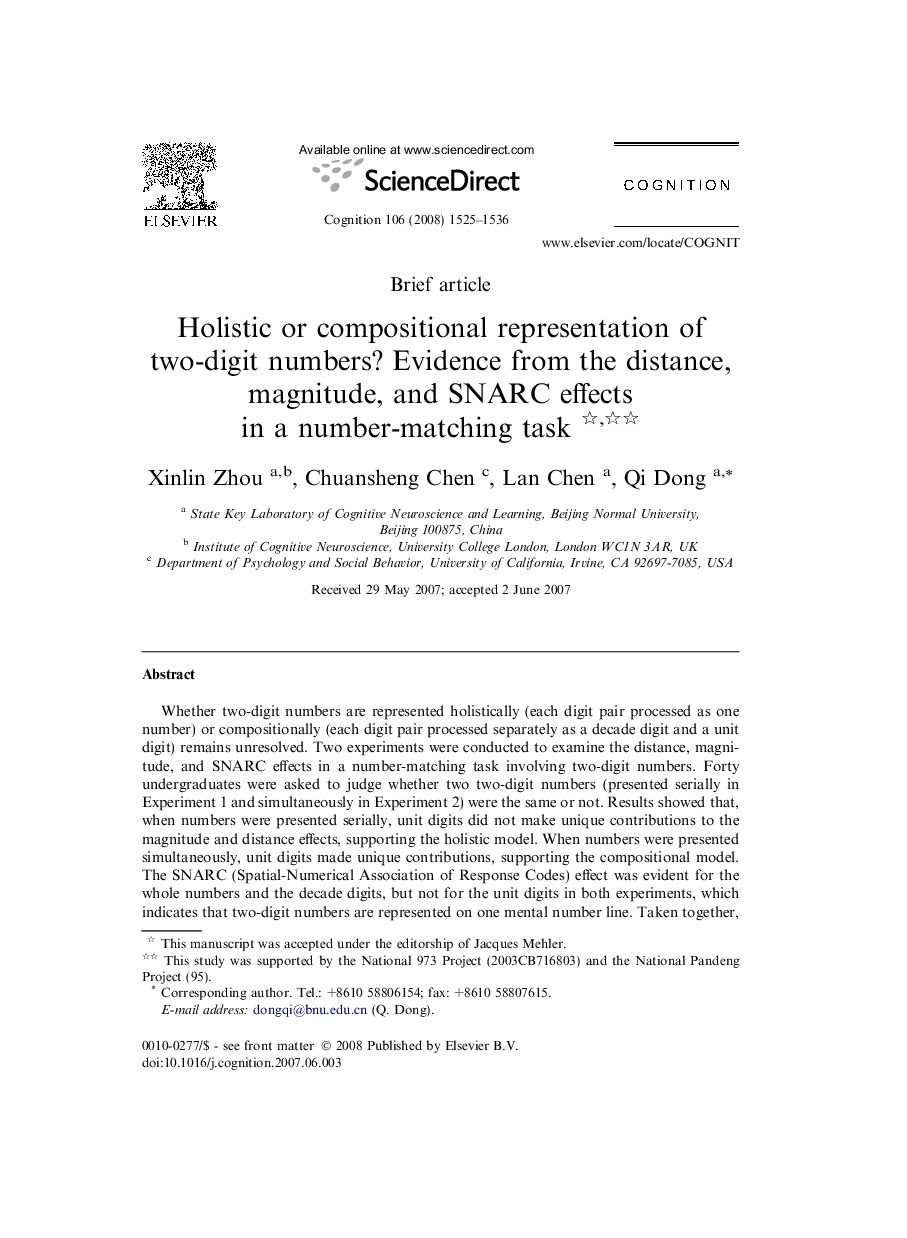| Article ID | Journal | Published Year | Pages | File Type |
|---|---|---|---|---|
| 927401 | Cognition | 2008 | 12 Pages |
Whether two-digit numbers are represented holistically (each digit pair processed as one number) or compositionally (each digit pair processed separately as a decade digit and a unit digit) remains unresolved. Two experiments were conducted to examine the distance, magnitude, and SNARC effects in a number-matching task involving two-digit numbers. Forty undergraduates were asked to judge whether two two-digit numbers (presented serially in Experiment 1 and simultaneously in Experiment 2) were the same or not. Results showed that, when numbers were presented serially, unit digits did not make unique contributions to the magnitude and distance effects, supporting the holistic model. When numbers were presented simultaneously, unit digits made unique contributions, supporting the compositional model. The SNARC (Spatial-Numerical Association of Response Codes) effect was evident for the whole numbers and the decade digits, but not for the unit digits in both experiments, which indicates that two-digit numbers are represented on one mental number line. Taken together, these results suggested that the representation of two-digit numbers is on a single mental number line, but it depends on the stage of processing whether they are processed holistically or compositionally.
